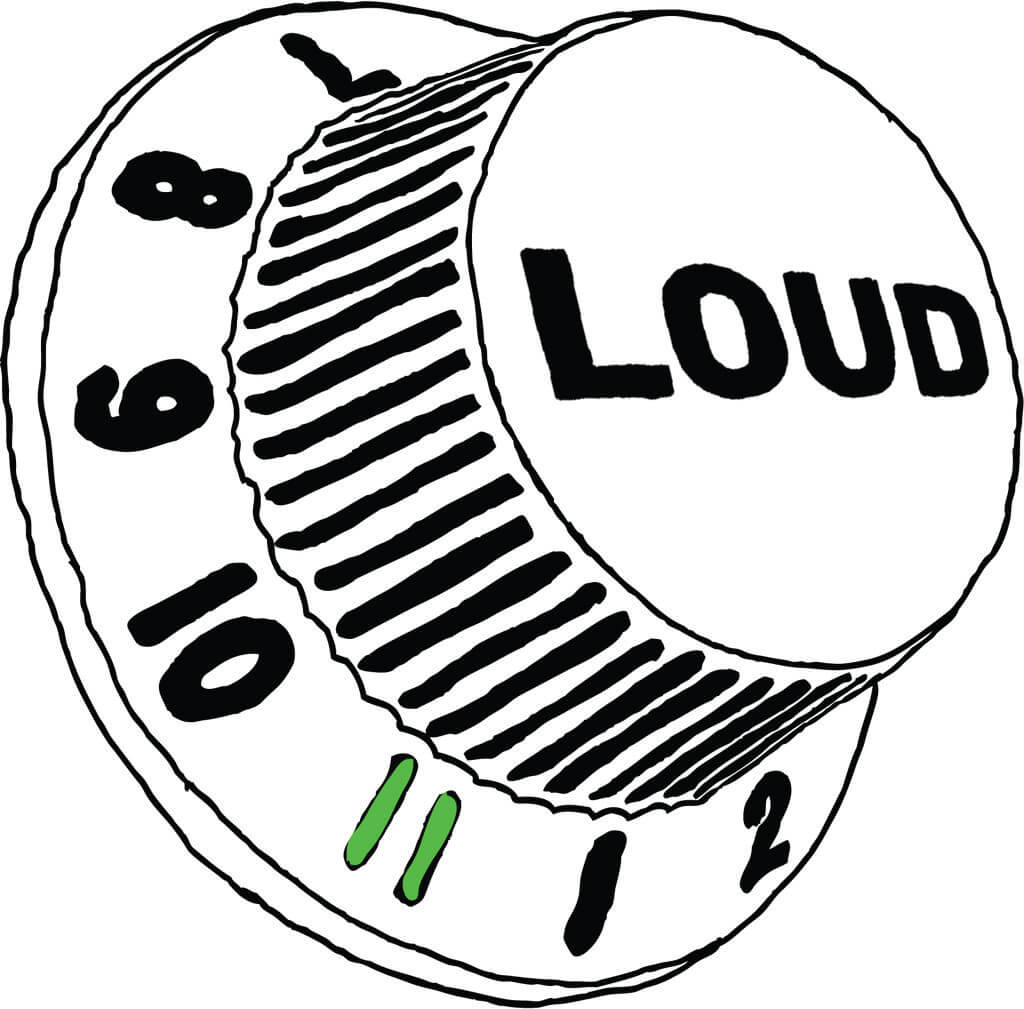How Musicians Can Prevent Hearing Damage
Musicians have traditionally resisted wearing hearing protection. Their reasons for avoiding it range from not wanting anything to interfere with hearing every nuance of sound to concerns about appearing “nerdy.” What many fail to realize is that lack of hearing safety now translates to hearing loss and tinnitus later ― neither of which is conducive to creating or enjoying music.
THE RISK OF IRREVERSIBLE NOISE-INDUCED HEARING LOSS
Noise-induced hearing loss (NIHL) is the result of overexposure to harmful, loud sounds. It can occur due to frequent exposure to noise or being too close to a single, explosive sound. In either case, the high decibel levels damage the tiny, fragile sensory nerve endings of the inner ear (hair cells) responsible for transforming and sending sound vibrations to the brain. The more of these hair cells destroyed, the fewer sounds you hear. And once they wither away they are gone for good, leaving you with permanent hearing loss.
Musicians experience both long-term and impulse sound high decibel (dB) exposure during their careers. What constitutes a high decibel level? According to some experts, 85 dB is the threshold beyond which sound exposure becomes unsafe. Musicians are exposed to roughly 110 dB while playing onstage, and depending on where you’re positioned in relation to an amp or PA speaker, that can increase to 150 dB. The higher the decibel level, the less exposure it takes to cause hearing loss ― e.g., at 112 dB, damage begins occurring after just one minute of exposure.
Needless to say, the average musician’s experience with loud sounds goes way beyond that. Add in concussive blasts from special effects like on-stage explosions – think AC/DC’s famous canon blasts during For Those About to Rock (We Salute Yo) – and you have a near-guarantee of permanent hearing loss, with or without a tinnitus accompaniment.
 THE TORMENT OF TINNITUS
THE TORMENT OF TINNITUS
Musicians are 57 percent more likely to experience tinnitus, a condition that causes you to hear sounds that have no external source. These noises are most often described as ringing, buzzing, humming, hissing, or other irritating sound that becomes more noticeable in externally quiet conditions. While audiology has yet to uncover the exact mechanism behind tinnitus, one of the most common triggers is noise damage either caused by a single concussive sound (e.g., a shotgun blast) or cumulative exposure (e.g., a regular schedule of orchestra rehearsals and performances).
For some, tinnitus is merely an annoyance that can be ignored most of the time. But for others, it can be constant and cause overwhelming psychological distress. Tinnitus alone does not cause you to lose your hearing. However, it is often an indicator of hearing sensory organ deterioration and future hearing loss, even if an initial diagnosis doesn’t reveal any hearing impairment yet. Some prominent musicians known to have tinnitus include Neil Young, Pete Townshend, and Jeff Beck.
WHAT MUSICIANS CAN DO TO AVOID HEARING DAMAGE
As discussed at the beginning of this article, many musicians balk at the idea of wearing hearing protection. However, a musician who truly understands the career (not to mention life) consequences of hearing loss should start using protection now.
Even if you suspect you’ve already done some damage by playing without hearing protection, it may not be too late to keep your condition from worsening significantly or expanding to include tinnitus.
ACTIONS TO TAKE NOW
1. Take regular breaks from the music during rehearsals. Go into a quiet room and rest your ears for as long as feasible.
2. Avoid loud noise outside of rehearsals and performances. Don’t pile on additional exposure to high decibels when it’s avoidable.
3. Lower the volume when wearing headphones (or in-ear monitors). Rather than cranking up the sound in order to hear a track you recorded more clearly, invest in higher-quality “cans” that improve clarity without the need to crank sound up to eleven.
4. Wear hearing protection whenever you’re playing. Whether you use simple foam earplugs or advanced hearing protection designed specifically for musicians, this is the single biggest thing you can do to preserve your hearing health.
5. Finally, for those musicians who already have damaged their hearing, hearing aids can restore at least some of what you’ve lost. Hearing aids often significantly or even completely alleviate tinnitus by producing therapeutic sounds to divert your attention from the annoying phantom noise that disrupts your quiet moments. And, as hearing aid technology continues to advance, more options will become available that will allow you to hear sound with the clarity and precision necessary to create and enjoy music again.
ABOUT THE AUTHOR
Dr. Navid Taghvaei is an Educational Specialist with Signia. He is responsible for conducting very complex individual and group technical training courses and activities involving new and existing developments in the areas of audiology, products, software, and technology for employees and customers. He demonstrates multi-system products by preparing and conducting clinician training, supports clinical product offerings, and performs in-house clinical trials for the Audiology Department team. He has extensive clinical experience in pediatric and adult hearing instrument and cochlear implant fitting, programming, and rehabilitation. He has served as a practicing Clinical Director of Audiology in multiple multi-disciplinary otolaryngology and audiology clinics in the U.S. and internationally. Taghvaei received his doctorate in Audiology and master’s degree in Hearing Science from the University of Louisville School of Medicine and his bachelor’s degree in Cognitive Psychology from Arizona State University. He has also served as a lecturer and Clinical Preceptor at both universities for audiology and psychology courses.
